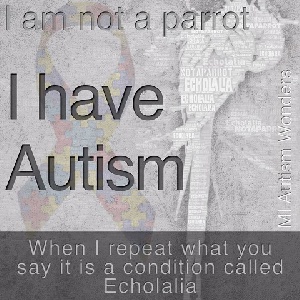In our part of the world where many people, especially children continue to suffer the devastating consequences of infectious (and communicable) diseases such as malaria, tuberculosis and HIV/AIDS, mental and developmental health (non-communicable) disorders appear to have been forced to the fringes by their more competitive contemporaries.
Yet a lot more children will have been diagnosed with one form of mental and/or developmental disorder, directly affecting their intelligence and/or quality of life compared to their counterparts on the other side. It is known that about one in every 68 children (1 in 42 boys) in the USA is diagnosed with autism spectrum disorder (ASD) annually.
Unlike other communicable diseases which tend to eventually cause the demise of their victims if not identified and addressed well, autism spectrum disorders such as autism cause their own kind of depredation through a rather progressive impairment of communication and language, social and in many cases, intellectual development. While autism may not be considered deadly, there is the tendency for it to result in severe limitations in educational, social and eventually socio-economic development.
Humans are social beings: we interact with each other by observing certain rules, societal norms and other etiquettes. Theses help as communicate with each other and behave appropriately while controlling our emotions. Largely, this comes naturally to us-without we having to put in much effort.
But for some people, things are not that straight forward. They seem to be living in their own world and play according to their own rules. Imagine being forced to watch a game of cricket when you absolutely have no idea about the rules of the game. For you it will seem to be cruel and unusual punishment.
That in a way is autism. It is a result of an alteration in development rather than a physical disease or genetic problem. It usually starts in childhood. One key feature about it is repetitiveness. Individuals with autism spectrum disorders display a tendency to engage in a particular activity in the same manner all the time. It is at times, so fascinating and yet very disturbing.
Typically, children on the spectrum avoid eye contact. Many will have delays in language and social development such as delays in being potty-trained and significant delays in speech with some being erroneously tagged “deaf and dumb”. Yet they are so gifted (almost ‘super human’) that they effortlessly perform certain tasks considered impossible humanly including solving difficult mathematical equations and puzzles; but they find it rather difficult to engage in simpler tasks of social interaction. History is littered with several of such ‘gifted’ individuals.
It is the associated atypical behaviours mainly caused by heightened sensitivity to textures, tastes, colours and sound resulting in their inability to deal with new environments and control their emotional expressions including anger that become frustrating for families. Depending on where on the spectrum a person is, s/he could be deemed severe (full blown autism) or a mild or moderate.
Today, several resources are available albeit not widely accessible by many due to their cost implications to help parents, children and adults with ASDs. The cheapest and widely accessible resource in my opinion, is our society (those of us considered ’normal’ or neurotypical). We have to find ways of including the integration of these ’special’ individuals into our daily fabric: public schools, churches, playgrounds, etc. We must strive to learn their rules and understand them while teaching them ours. We cannot afford to discriminate against them.
April is the Autism Awareness Month and blue is the colour: So, let us advocate by seizing to tag them with their disabilities. They are NOT AUTISTIC. Rather, they have autism, or they are on the autism spectrum.
Opinions of Saturday, 31 March 2018
Columnist: Dr Lawrence Osei-Tutu















